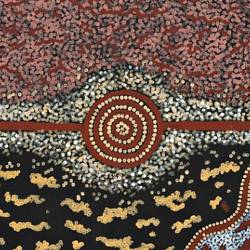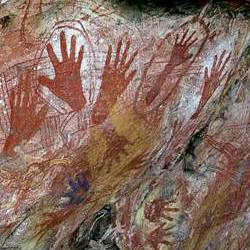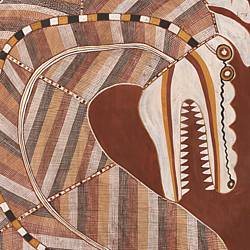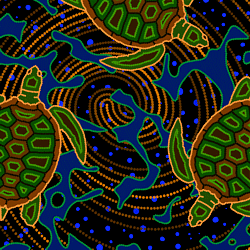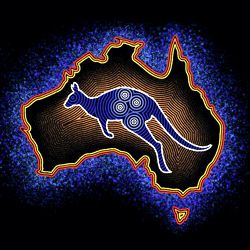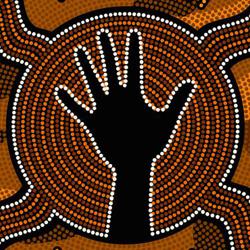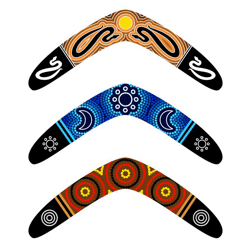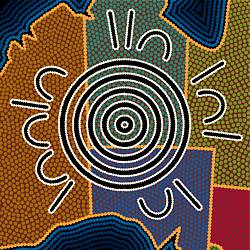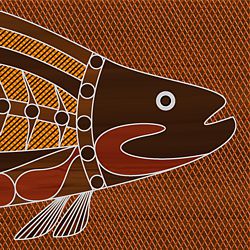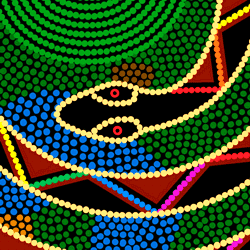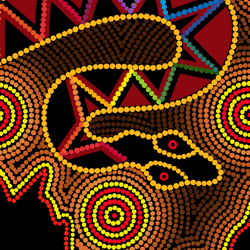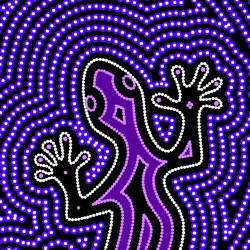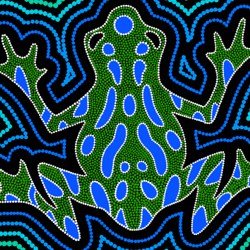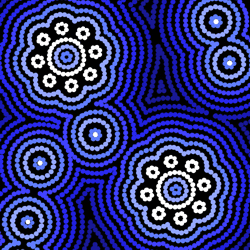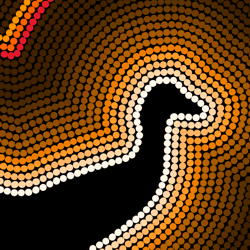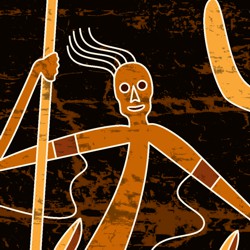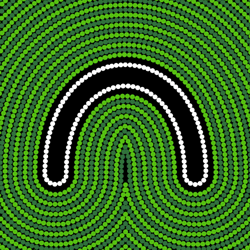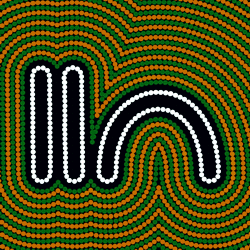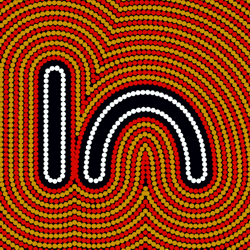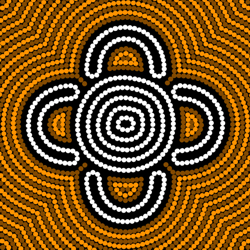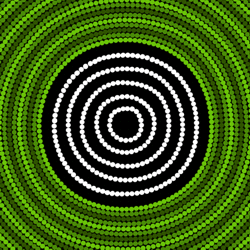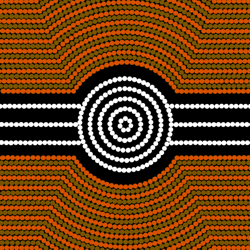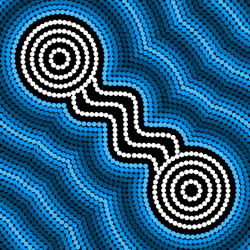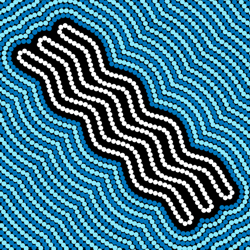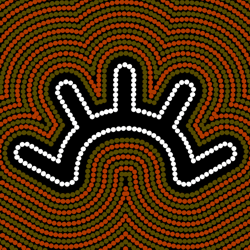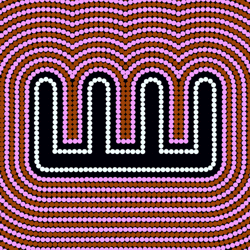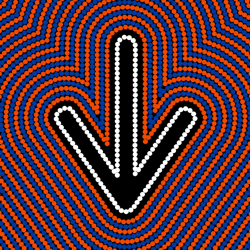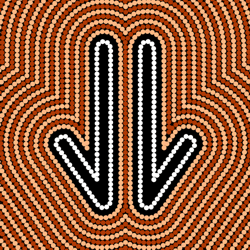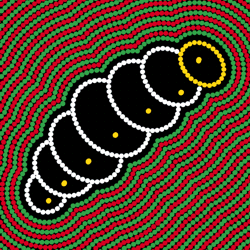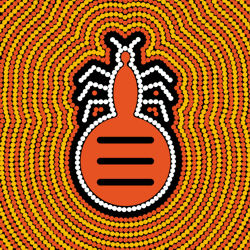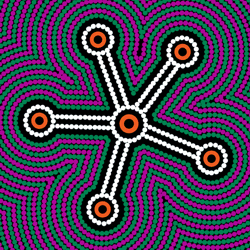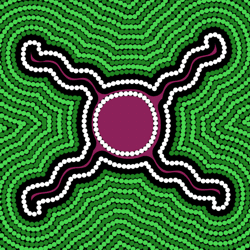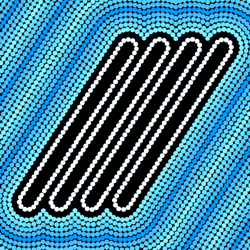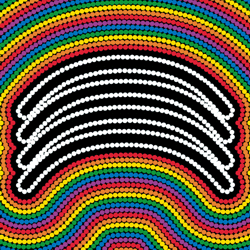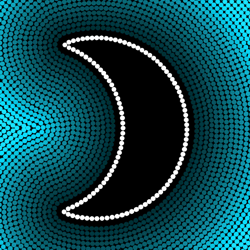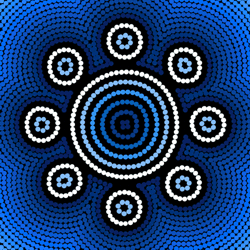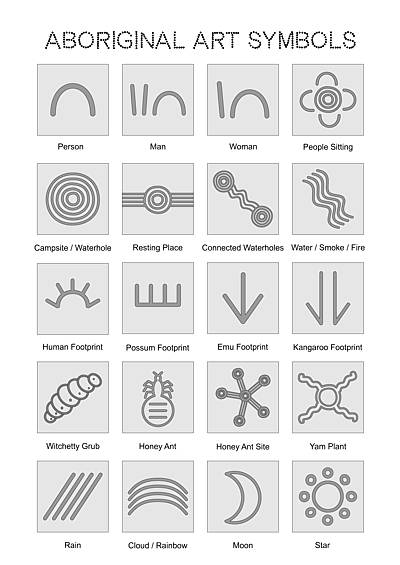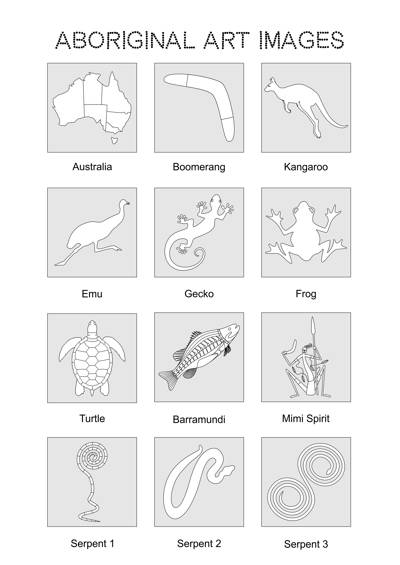Aboriginal Bark Paintings
Aboriginal bark paintings were originally created for use in tribal rituals and ceremonies. They became the model of indigenous Australian art, until they were superseded by the Papunya painting movement in 1971.
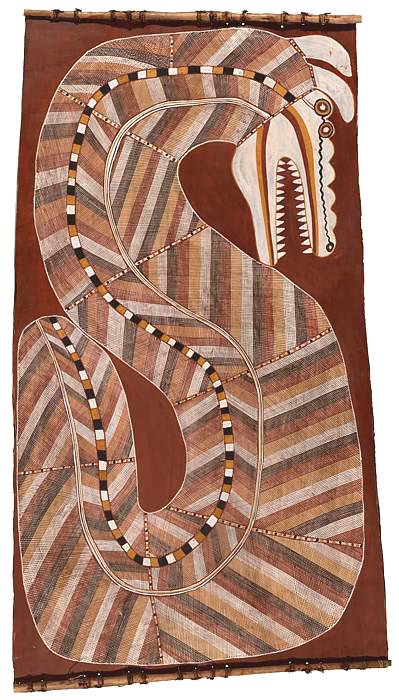
CURLY BARDKADUBBU (c.1924–1987)
'Ngalyod, the Rainbow Serpent', 1984 (earth pigments on Stringybark (Eucalyptus Tetrodonta)
National Gallery of Victoria, Melbourne
Aboriginal bark paintings were originally created for use in tribal rituals and ceremonies, after which they were usually discarded. The preservation of bark paintings as art objects was never a consideration until the late 19th century when a discerning interest arose from explorers, anthropologists and collectors.
Aboriginal Bark Artists
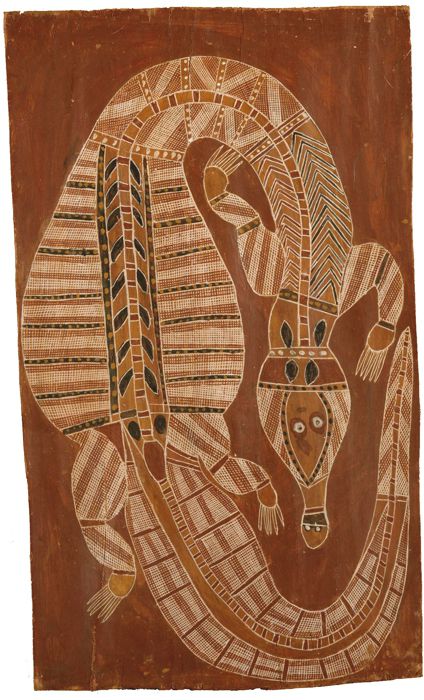
YIRRWALA (c.1897–1976)
'Mardayin Crocodile', 1965 (earth pigments on Stringybark (Eucalyptus Tetrodonta)
National Gallery of Victoria, Melbourne
Around 1925, an Aboriginal community from Gunbalanya in West Arnhem Land, a region with a rock art tradition dating back thousands of years, were encouraged to adapt their artistic skills to create bark paintings that could be sold in the cities. As the demand for their paintings grew, other Aboriginal communities from Groote Eylandt, Milingimbi Island and Yirrkala followed in their footsteps.
In contrast to the previous generations of indigenous artists whose work was unknown outside their own community, some artists who specialised in bark painting began to build a reputation due to their unique skill and vision. Among those whose distinctive work attracted both national and international attention were Yirrwala (c.1897 – 1976) who was known as the ‘Picasso of Arnhem Land’, and two of his greatest successors, Curly Bardkadubbu (c.1924–1987), and the contemporary artist John Mawurndjul (b. 1951).
Over the 20th century, bark painting from Arnhem Land and the Kimberley region gradually evolved to become the model of indigenous Australian art, until it was superseded by the explosion of color and pattern from the Papunya painting movement in 1971.
Aboriginal Bark Art - Techniques
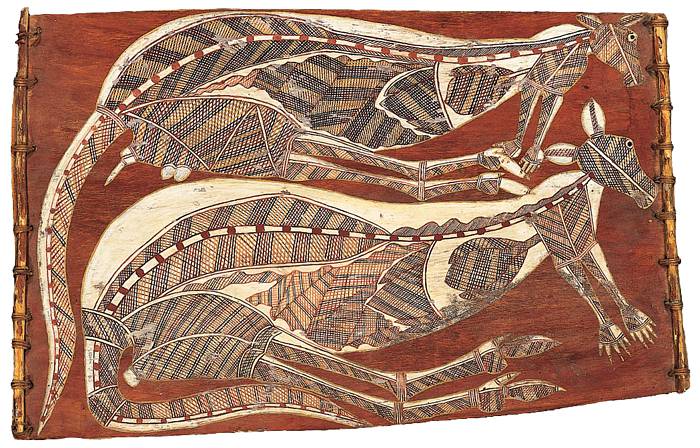
DICK NGULEINGUELI MURRUMURRU
'Kangaroo' 1959 (earth pigments on bark)
© Dick Nguleingulei Murrumurru
As the art of Aboriginal bark painting evolved from the rock art tradition, it is no surprise that they share similar subject matter: human figures, animals, spirit beings, ceremonial designs and Dreaming stories. Bark, however, was a more sympathetic painting surface and offered artists a greater opportunity for detail and decoration. They exploited this through a style of visualization called 'x-ray-art' and a method of shading known as 'rarrk'.
X-Ray art is a style of Aboriginal painting that breaks down the subject's anatomy into sections, based on how it is butchered and utilized. Dick Nguleingulei Murrumurru, a former indigenous hunter, perfectly illustrates this analytical method in his painting of a male and female kangaroo.
The Aboriginal people are ethical hunters who do not waste any part of their prey. For example, if a Kangaroo is killed, the flesh is cooked and eaten, the skin, tendons and organs are dried to make clothing, cords and containers, and the bones are shaped to form tools and weapons. X-ray paintings acknowledge how an indigenous artist not only observes the exterior appearance of an animal, but also understands the nature of its musculoskeletal interior. These images are not meant to be accurate anatomical diagrams; they are elegant designs that illustrate a 'nose-to-tail' philosophy of sustainability and respect by not wasting any part of the animal.
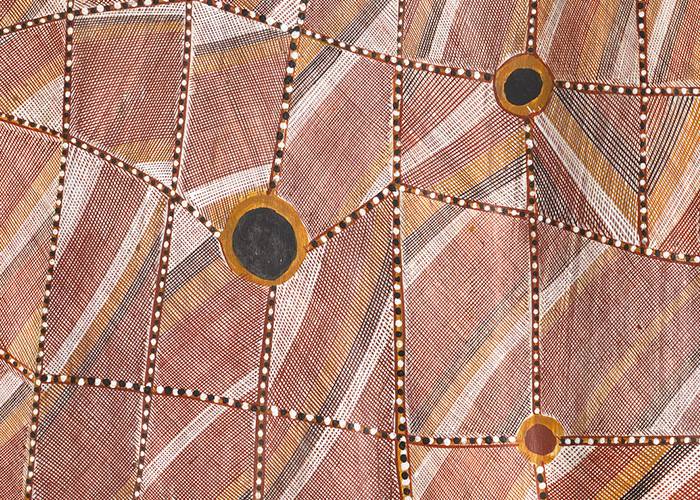
JOHN MAWURNDJUL (b.1951)
Detail of 'rarrk' shading from 'Mardayin', 1998 (earth pigments on Stringybark (Eucalyptus Tetrodonta)
© www.johnmawurndjul.com
Rarrk is a style of cross-hatching that characterizes the bark paintings of Arnhem Land. It was originally painted on objects and bodies for ceremonial rites. When applied to bark paintings it invests the artwork with the spiritual power of its subject or story. Rarrk designs began as clan patterns which are identifiable through their configurations of color, but on more contemporary works they are also used for aesthetic effect.
Aboriginal Bark Art - Materials
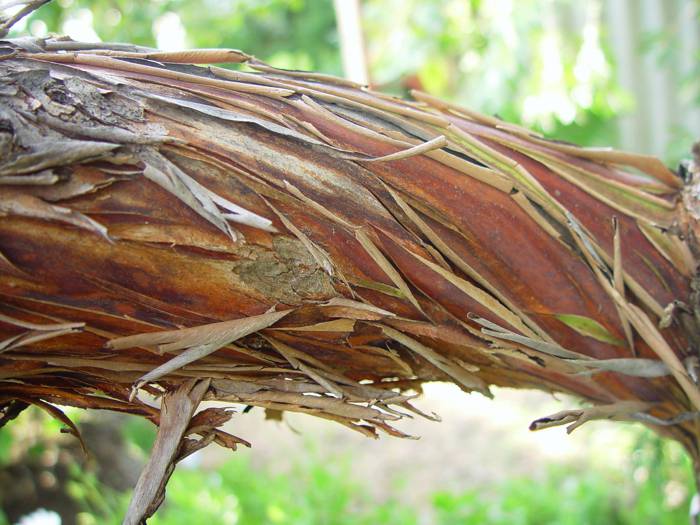
Eucalyptus stringybark branch.
Eucalyptus stringybark is the traditional support for Aboriginal bark paintings. Eucalyptus trees shed their bark annually and large sections of the material are cut, heated, flattened and dried to form a smooth painting surface. Once the work is finished, splints are tethered to opposite ends to stop it warping.
The artist starts by painting the bark with a red ochre ground onto which he applies the image in finely outlined sections which are either filled with flat color or embellished with rarrk.

Rarrk Brushes (sable lining brushes)
Patterns of rarrk were originally applied with long blades of grass dipped in paint. Over time these were replaced by brushes made from sticks with long strands of human hair attached. Like the modern lining brushes illustrated above, they were ideal for painting the long straight lines used for cross-hatching.
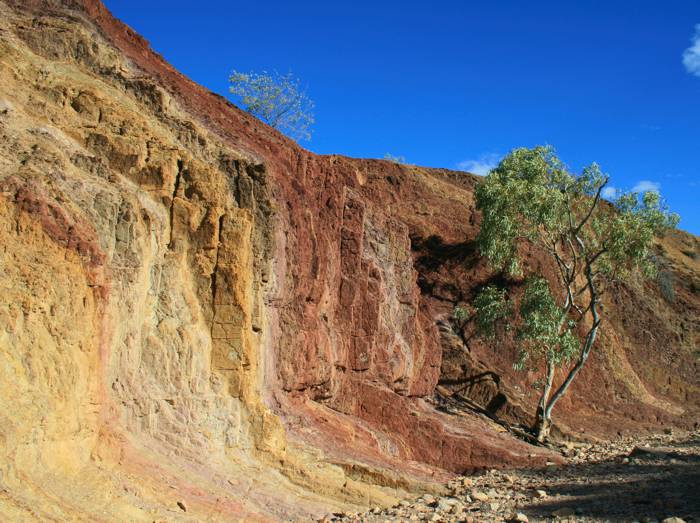
Aboriginal ochre pit with a range of colors.
Photo © Toby Hudson
Ochres are natural pigments, extracted from clays and minerals, to be used as colors in traditional Aboriginal art. They are ground to a powder and mixed with water, natural resins or animal fats to bind them into a fluid medium for painting. Their limited palette of reds, browns, yellows, creams, whites, and blacks has been a distinguishing feature of Aboriginal imagery for thousands of years.

